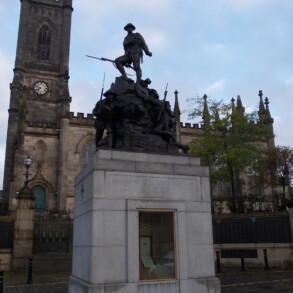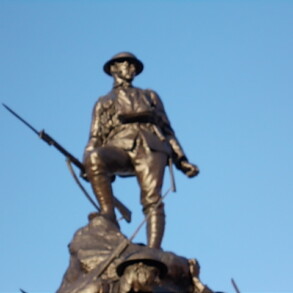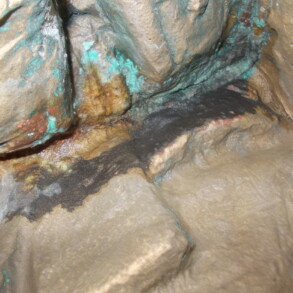Oldham War Memorial – Sculpture
Oldahm War memorial consists of a range of plaques; mostly commemorating the lost of the 1914-18 war with smaller plaques in memory of more recent conflicts, a book of remembrance housed within a granite plinth which supports a fine, four figured Toft sculpture. All were in desperate need of conservation with areas of corrosion and pitting on the bronze elements, along with attempted theft of a least one large plaque and the removal of several fixings. Eura Conservation, in association with Lambert Walker Ltd., were responsible for the conservation of all bronze elements and making moulds of all bronze plaques in case of further theft.
Albert Toft (1862 – 1949) is a celebrated Midlands born sculptor. He has a number of War Memorials in the area and Eura Conservation are pleased to have been involved in the conservation of at least four: Cannon Hill South African War Memorial, Chadderton War Memorial, Oldham War Memorial and Central Birmingham’s Hall of Memory. Oldham presented particular problems in as far as previous cleaning and laquering had left a pale, pitted and corroded surface. Indeed there were places where corrosion had eaten through the bronze allowing salts and other remnants of the casting process to leach through and further damage the surface. In other areas there were active corrosion cells requiring more intensive cleaning than other places. The whole statue and it’s base were leaking and in danger of damaging the precious ‘Book of Remembrance’ which is viewed through a window. It is possible that at one time the memorial was a walk through room with two sets of bronze doors, again designed by Toft. One set of doors was replaced with a window and this set is now in the Council Chamber. The remaining doors give internal access when needed to the Book of Memory. Micro-photography prior to and during cleaning trials helped ascertain the levels of cleaning required in different areas of the bronze. The whole monument was carefully treated to remove all remaining laquer and the active corrosion cells, the build up of sulphates on the surface and the leached salts were selectively ‘wet jos’ cleaned prior to careful repatination with traditional chemicals, filling of the many holes and finally coating with microcrystalline wax. Alongside this, a mould was taken from the remaining (though broken) bayonette to replicate it and replace one that had previously been stolen, these too required patinating to match, fixing and waxing. The whole staue was then buffed and subjected to a thorough water test before the re-instatement of the ‘Book of Remembrance.’ One of the difficult areas was to keep in line with the needs outlined in the grant awarding agencies for minimal necessary conservation and the desires of the clients and the local population for an aesthetically pleasing sculpture more visually akin to the remembered memorial. |







